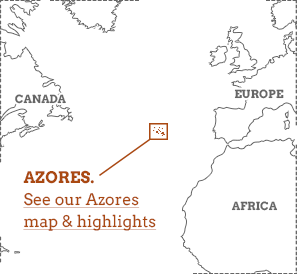If you think of an ocean as a desert, then a cluster of islands is an oasis. By catching the rain, they allow plant life to thrive. They also create eddies of nutrient-rich water, providing feeding grounds for marine life and birds. The Azores, scattered 1500 kms west of Portugal's capital, Lisbon, in the North Atlantic, are just such an oasis, attracting travelers of many types – from medieval seafarers to modern-day yachties, and from rare Cory’s shearwaters to mighty blue whales.
![]()
With active volcanoes, crater lakes, moss-draped forests and shores composed of swirls of lava, this is an archipelago packed with natural drama.
![]()
Relatively little-known as a vacation destination, in recent years they’ve gradually grown popular with discerning walkers and wildlife-watchers. Many Azoreans used to earn a living from hunting whales, but over the last three decades the central cluster of islands has reinvented itself as one of the world’s best places to see both whales and dolphins.
In landscape, history and atmosphere, the Azores are a little like their Macaronesian neighbours, Madeira, Canary Islands and Cape Verde. But only a little. Rugged, remote, and environmentally-aware, there’s something very special about this archipelago that makes it totally unique.


